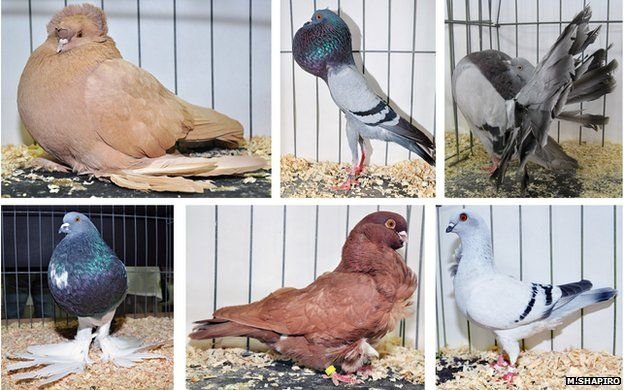- Biodiversity is differences between organisms.
- There can be ecosystem biodiversity, species diversity and genetic diversity.
- Diversity is an essential tool for evolution to work.
- Variation results in biodiversity.
- Genetic biodiversity leads to more mutations which thus leads to more differences as new features which are genetically viable spread.
Selection
- Selection favors viable traits which over time spread throughout the species and lead to change or diversification.
Examples
- Lepus europaeus, the European hare is a large and strong hare that stays brown all year. This makes it vulnerable to predators in snowy environments which is why it is more common in cities, which have less snow and predators.
- Lepus timidus, the mountain hare is a small and light type of hare that turns white in the winter. Its broader feet allow it to walk above snow and it is harder to spot by predators. The mountain hare thrives in more rural snowy areas and lives in the forest.
Natural Selection
- Evolution acts on a species, but natural selection acts on an individual.
- The fittest individuals stay alive and reproduce most efficiently.
- A longer lifespan means more chances to produce offspring.
- Living in a better condition means overall better health and less diseases and stress, which allows for more offspring.
- Success in finding mating partners (generally through being fit) also leads to more offspring.
- Successful gene alleles spread in the population.
- Only genetic traits are inherited to the next generation, acquired traits such as wounds are not inherited.
Types of Natural Selection
- Stabilizing selection is a form of natural selection where average traits are favored.
- Stabilizing selection features Gaussian distribution, meaning that extreme features are less common.
- For example in a species of elk, those with medium-length antlers and average size would be more common. This could be because large antlers would be cumbersome leading to predation. Elk with small antlers would likely not be preferred by females.
- Proportion of average type of individuals are high and extremes are in the minority.
- For example the birth sizes of humans, and generally all mammals remains generally consistent.
- Directional selection is when the environment changes and new properties become advantageous.
- If there is a new disease outbreak, a group that might have a natural resistance to the disease would allow that gene to spread far more as the resistant individuals would be more fit in the new environment.
- Diversifying selection is when a population spreads into different environments with different conditions.
- The differing conditions lead to various traits becoming advantageous and a species diversifies according to the environment.
- For example the northern goshawk (Accipiter gentilis) the females can be almost twice as large as the males.
- This is because during nesting, the males hunt and females take care of the nest. Smaller males were more successful as they could hunt better in dense forests.
Sexual Selection
- Selection of a mating partner favors strong individuals.
- Often express extreme otherwise useless traits.
- For example peacocks and ruffs have feathers that only serve for appearance, often hindering movement and camouflage.
- Short-term strategies that are meant to attract mates through appearance and long-term strategies to ensure successful raising of offspring.
- For example humans and elephants take care of their offspring for long periods
- Another example in humans the ability to provide resources, ability to reproduce, voice, odor, facial preferences, etc. are determine mating preference.
Artificial Selection
- Selective breeding by humans changes allele distribution in population.
- Traits that would not be viable in nature become more common are favored by humans and the gene is carried on.
- Humans often favor very extreme features due to their unique appearance.
- These traits are carried on by humans and lead to divergent evolution.
- Breeding of domestic animals such as dogs, cats, pigeons, etc.

Genetic Drift
Bottleneck Effect
- In a small population, some alleles may disappear or appear by pure chance.
- Catastrophes, sudden changes or disappearances of an environment or a deadly disease.
- Only a few genes in the population survive, so their genes are inherited by the entire future generation.
Founder Effect
- Only a few individuals migrate to new areas and start a new population.
- All the genes of the future population are based on the few founder individuals.
- For example wolf populations in western Finland are based on a few individuals which migrated from the east.
- The eastern wolves mix with the wolf population in Russia and thus have a wider genetic diversity.
- Both the bottleneck effect and the founder effect lead to similar results.
Image Sources
https://biologydictionary.net/natural-selection/
https://www.bbc.co.uk/news/science-environment-21279422